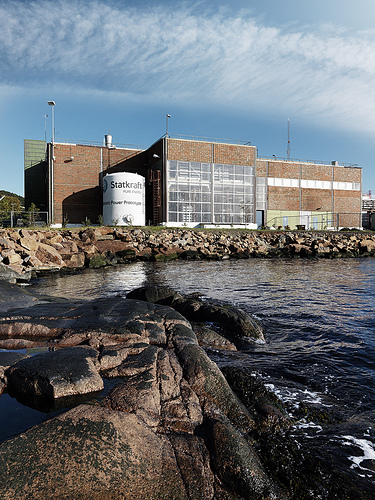Osmosis is a process that is vital to the whole of life. It is based on a partially permeable membrane which will allow water through but not allow salts or other dissolved substances. If you put salty water on one side and fresh water on the other water will move through the membrane from the fresh water side to the salty one. This drives lots of processes in living cells and is the reason that soaking lettuce in water will make it swell and become more crisp.
 Now a Norwegian energy company, called Statkraft, have made use of this effect in the world's first osmosis-driven power station.
Now a Norwegian energy company, called Statkraft, have made use of this effect in the world's first osmosis-driven power station.
The principle is to put seawater on one side of a membrane and fresh water from a lake on the other. Water flows passively through the polymer membrane from the fresh to the salty side, increasing the pressure of the seawater. This pressure increase is then used to drive a turbine to generate electricity.
The current installation uses a 2000 square metre membrane capable of generating energy at the rate of 2-4 kW. This is a promising start but there are many challenges ahead including optimising the membranes so that they are not compromised by impurities in the water and in cutting costs, but Statkraft thinks that there is the potential to generate 10% of Norway's energy by osmosis, and potentially more across the rest of the world.
References
- Previous A Touching Speech
- Next Folding solar cells










Comments
Add a comment